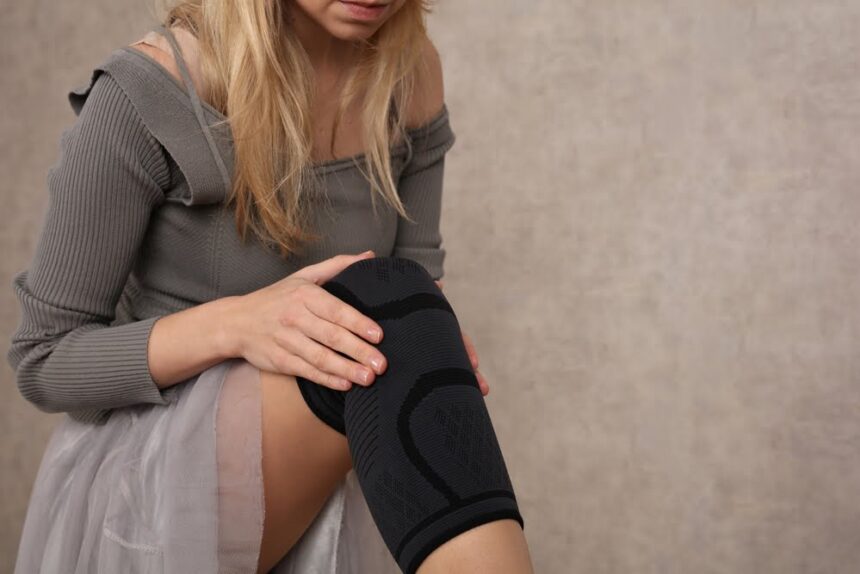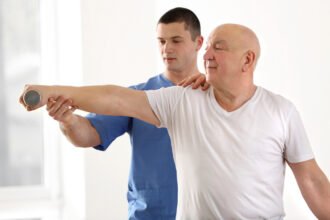Injuries can be painful for anybody. Some people experience worse injuries than others, although they can usually recover if they follow the right steps.
Dancers are among those most likely to experience an injury during their career. One study found that 82% of dancers experience at least one and as many as seven injuries. The good news is that there are ways to deal with these injuries. One of the best recovery approaches for dancers is to use physiotherapy.
Great Reasons for Dancers to Use Physiotherapy
Although many dancers get introduced to physiotherapy for the first time when they need to recover from an injury, the immediate gains are so effective that they continue to enjoy the benefits for years to come.
As with any repetitive, challenging physical activity, dancers too suffer from common professional injuries. However, it doesn’t need to take a sprained ankle or a shin splint to experience the benefits of physiotherapy for dancers. When done as a comprehensive healing and prevention treatment, physio improves the overall dancer’s health and encourages the body to extend current capabilities.
If you are wishing to get started with specialized programs, here is what you need to know about the benefits of dance physio.
1. Prevents injuries.
Dance is a complex kinetic conversation of your body’s muscles, tendons, and brain. Regardless of how committed you are to dance practice, your body hides weaknesses at points you may not be able to predict. Such tender spots may break, inflame, sprain, or strain before you know it.
Physio for dancers helps you discover your underperforming areas and dedicate time and attention to bring them to balance with effortless movements.
Undergoing regular assessments of core stability, hip and knee will help you learn your body and ask for a dance physiotherapist’s help before it is too late.
For instance, comprehensive pre-pointe assessment is essential in evaluating the strength, flexibility, and readiness of ballet dancers. It focuses on assessing the physical aspects critical for pointe work, including foot and ankle strength, alignment, and posture, amongst others. Experts can provide personalized advice and recommendations, preventing injury in pointe dancing.
2. Strengthens muscles, joints, and ligaments.
Natural body limitations may cause you to think you will never perform certain postures optimally.
Working with targeted exercise programs, soft tissue treatment, and manual therapy are, among the many, techniques available to strengthen and relax muscles, improve dance coordination, and build musculoskeletal resilience.
Pilates for dancers is essential training to restore full-body muscle connection, enhance agility, and help you perform certain movements day-by-day and faster.
Key considerations include developing a strong core for better balance, improving flexibility and control through targeted movements, and learning precise breath control for improved stamina. Dancers should seek personalized Pilates exercises tailored by qualified instructors who understand dance biomechanics.
Consistent integration of Pilates with dance training can improve technique, mental focus, and overall performance quality. This holistic approach helps dancers achieve greater movement precision and longevity in their careers.
Furthermore, the practice of yoga emphasizes balance and stability, which can significantly improve joint health and enhance the stability of ligaments. Moreover, the slow, controlled movements required in yoga increase muscle endurance and efficiency.
3. Boosts cardiovascular health.
Cardiac rehabilitation for dancers is as important as treating muscles and tendons. 6-hour training and exhausting performances, sooner or later, will take their toll on the dancer’s stamina.
Dance physiotherapy includes cardiovascular screenings for designing aerobics and resistance strength exercises to help the heart work at its peak performance.
One crucial component of dance physiotherapy involves cardiovascular screenings. These screenings assess a dancer’s heart health and cardiovascular fitness, which are essential for endurance and overall performance.
Based on the results from these screenings, physiotherapists can design tailored aerobic and resistance training programs. Aerobic exercises help improve the efficiency and capacity of the heart and lungs, enabling dancers to perform intense routines without excessive fatigue. These might include activities like cycling, running, or swimming, which help build stamina.
Better circulation (improved arterial flow and blood lipid profile), maximum heart rate, endurance and cardiac output are just a few of the benefits of physiotherapy for dancers.
4. Helps with recovery and healing.
A serious injury or surgery for dancers is a traumatic, mentally, and physically taxing event. Furthermore, it can cause unwanted stress due to uncertainty of the healing process. Taking too long to heal and get back to shape is a scenario no dancer wants to deal with and a career risk. A six-week recovery for dancers may mean a failure. Misdiagnosing is also an issue because each dancer’s body is different and requires unique healing. Compensating for the extraordinary moves dancers make and reconditioning them to get back on their feet is part of dance physio treatments such as heat therapy, electrotherapy, Kinesio-taping, and remedial massage. Education is also a part of the physiotherapy for dancers, helping these performance artists recognize injuries and take action on time.
5. Boosts immune function.
Physiotherapy exercises can help dancers achieve whole-body immunity.
Stronger immunity is built on the verge of healthy and unhealthy stress, with the correct amount of challenging bodywork.
Regular massages help with flushing toxins out of the body, helping the body get rid of germs and viruses.
Increased levels of dopamine and decreased levels of cortisol are two benefits of exercise programs for dancers that prepare the body to undergo rick-free strenuous performances.
All those repetitive dance movements can cause fatigue, which is among the top risk factors for lowered immunity.
Moreover, inflammation in the muscles, tendons, and joints alerts the body to engage in its anti-inflammatory responses. Appropriately chosen exercise and other physiotherapy techniques can train the body’s defence mechanisms for optimal engagement and prepare the body for periods of heightened demands.
With an ongoing dedication to treating their body with the care and respect it deserves, dancers can improve core stability, prevent common hip and knee injuries, fight inflammation, and continue to do the job they love without taking unnecessary time off.









